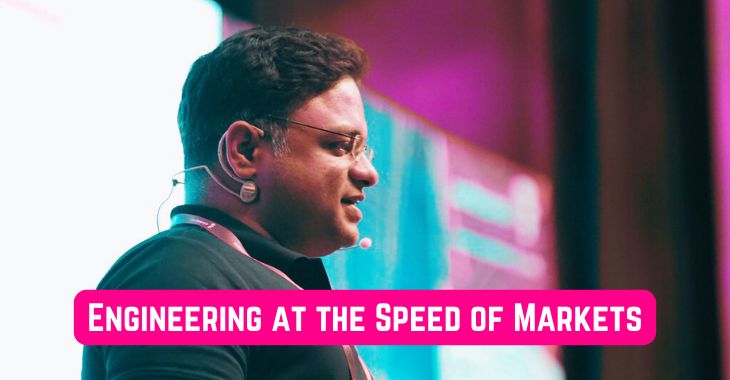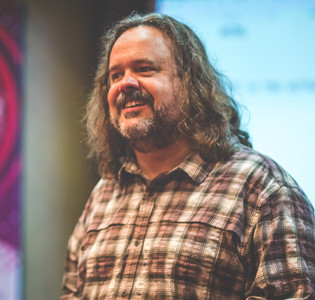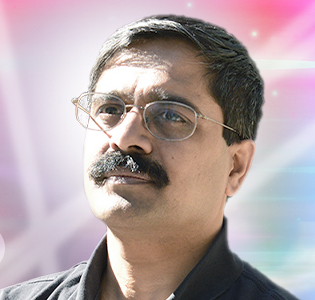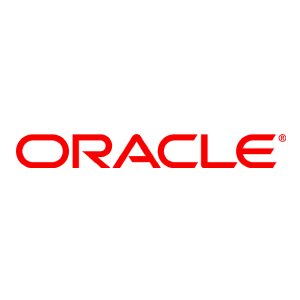
“Once again Saltmarch has knocked it out of the park with interesting speakers, engaging content and challenging ideas. No jetlag fog at all, which counts for how interesting the whole thing was."
Cybersecurity Lead, PwC

In the world of broking applications, milliseconds matter. Whether it's delivering real-time stock prices or processing millions of trades, speed and reliability are paramount. At AngelOne, one of India's leading brokerage platforms, engineering excellence is at the core of enabling seamless, high-scale equity trading for its 22 million customers. In a recent talk at GIDS, Jyotiswarup Pai Raiturkar, CTO at AngelOne, shared key insights into the design patterns, architecture choices, and technical strategies that drive their platform.
AngelOne's trading platform operates at breathtaking scale:
With such high stakes, the platform must deliver real-time prices, maintain high availability, and withstand unpredictable challenges such as network failures or even natural disasters. "We operate in an environment where delays are unacceptable, and resilience is non-negotiable," said Jyotiswarup.
To meet these demands, AngelOne employs three critical design patterns that ensure scalability, reliability, and a seamless user experience.
AngelOne’s platform uses a cell-based architecture, commonly known as sharding, to ensure scalability and fault isolation.
“We can move a shard from one data center to another instead of migrating all 22 million users at once,” Jyotiswarup explained.
AngelOne’s trading app maintains functionality even in adverse conditions like network failures or spotty connectivity.
“Even if you’re driving through a tunnel, the app stays responsive. The front end and back end work in sync to create a delightful experience,” said Jyotiswarup.
Given its dependence on external exchanges and services, AngelOne assumes potential failures in third-party systems.
AngelOne favors plain old SQL databases for their simplicity, transactional guarantees, and modern features like columnar indexing. “Engineers must justify why they can’t use SQL before exploring alternatives,” Jyotiswarup quipped.
Regulation adds another layer of complexity to AngelOne’s operations. As a regulated entity, the platform undergoes quarterly disaster recovery (DR) drills, where systems are intentionally disrupted to test their resilience. “We have to demonstrate to regulators that the system works even if wires are unplugged or entire servers fail,” Jyotiswarup said.
From his talk, several actionable takeaways emerged for engineering leaders:
Jyotiswarup Pai Raiturkar’s insights offer a blueprint for building high-scale, high-reliability systems in domains where performance is mission-critical. At AngelOne, engineering excellence is not just about speed; it’s about delivering a seamless and resilient experience in the face of extreme challenges.
For organizations looking to scale their platforms or build robust systems, AngelOne’s practices serve as a compelling example of how thoughtful design, smart technology choices, and operational discipline can make the difference.
As Jyotiswarup succinctly put it, “In equity trading, you have to be smart and fast. And engineering is all about making both happen.”

“Once again Saltmarch has knocked it out of the park with interesting speakers, engaging content and challenging ideas. No jetlag fog at all, which counts for how interesting the whole thing was."
Cybersecurity Lead, PwC

“Very much looking forward to next year. I will be keeping my eye out for the date so I can make sure I lock it in my calendar."
Software Engineering Specialist, Intuit

“Best conference I have ever been to with lots of insights and information on next generation technologies and those that are the need of the hour."
Software Architect, GroupOn

“Happy to meet everyone who came from near and far. Glad to know you've discovered some great lessons here, and glad you joined us for all the discoveries great and small."
Web Architect & Principal Engineer, Scott Davis

“Wonderful set of conferences, well organized, fantastic speakers, and an amazingly interactive set of audience. Thanks for having me at the events!"
Founder of Agile Developer Inc., Dr. Venkat Subramaniam

“What a buzz! The events have been instrumental in bringing the whole software community together. There has been something for everyone from developers to architects to business to vendors. Thanks everyone!"
Voltaire Yap, Global Events Manager, Oracle Corp.